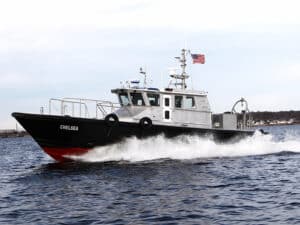
NTSB issues report on 2017 barge allision incident
Written by Nick Blenkey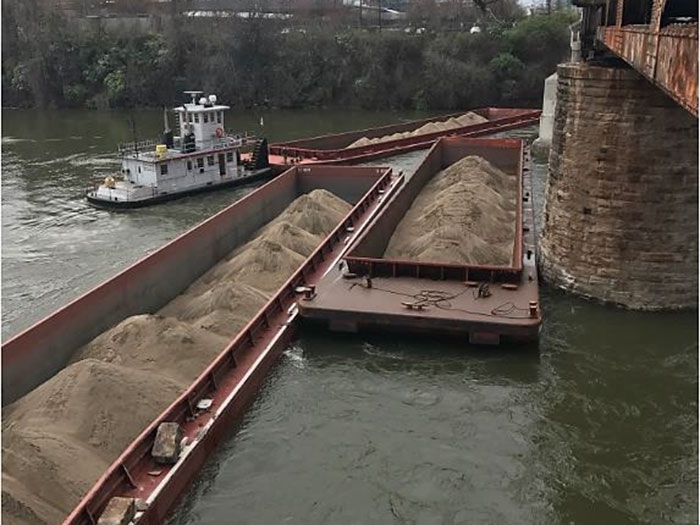
Barges from the Steve Plummer tow pinned against the upstream side of the CSX Railroad Bridge
MAY 21, 2018 — The NTSB has issued its report on a March 2017 incident in which two of three barges pushed by a 51-year old towing vessel allided with the upstream guard pier of the CSX Railroad Bridge at mile 190.4 on the Cumberland River in Nashville, TN.
No injuries or pollution resulted from the accident; however, the two barges sustained damage and the guard pier was destroyed in the allision.
The towing vessel, the Steve Plummer, was built in 1966 by the Barbour Metal Boat Works shipyard, St. Louis, MO, as the Philip S. II. The vessel was sold several times and, in 2015, renamed the Steve Plummer. The following year, 2016, the vessel was purchased by Pine Bluff Materials LLC.
The Steve Plummer had twin propellers, each powered by a diesel engine rated at 350 horsepower.
Investigators researched industry and Coast Guard guidance for installed towing vessel horsepower requirements per typical loaded river barge. Industry discussion varied from 175 to 240 hp per 2,000-ton barge in normal- to medium-high river conditions, using an experienced operator. The Coast Guard’s Towing Vessel Center of Expertise stated that there are no regulatory vessel-hp-to- barge requirements or guidance, but both Coast Guard and industry have widely used 250 hp per loaded barge as “best practice” on inland rivers. Based on these hp-to-barge ratios, the 700-hp Steve Plummer pushing three barges (carrying a total of 3,934 tons of cargo) was within the industry norm for an experienced operator.
Although the Cumberland River was rising from recent rain, at the time of the accident the river was within its normal range.
The Steve Plummer pilot was familiar with the route, having made the transit almost daily in both directions for the previous three months without incident. He said that, on the day of the accident, the current was swift at 3 mph and his 3.5-mph speed was the maximum forward speed that the tow could make. The Steve Plummer tow had little additional power and thus limited maneuvering ability when passing through the bridge’s right descending bank channel span.
The company stated that the number of barges the Steve Plummer towed depended on the river conditions, weather, the area of transit, and the pilot’s level of comfort. The Steve Plummer could tow four barges during slack-water conditions, typically towed three barges during normal river conditions, and towed one or two barges during high-water conditions. The company stated that it left the barge number decision to the individual tow pilots. Although not required in company guidance, a pilot could check with a more senior pilot (if conditions warranted) about reducing the tow size to allow for more control in high-water conditions. The accident pilot did not check with a more senior pilot before the transit. After the allision, the company reduced the tow size to a maximum of two barges through the CSX Railroad Bridge.
Probable Cause
The National Transportation Safety Board determines that the probable cause of the Steve Plummer tow’s allision with the CSX Railroad Bridge was the pilot’s decision to tow three loaded barges during rising river conditions with swift currents, which overwhelmed his ability to maneuver the tow through the bridge.
Read the NTSB report HERE

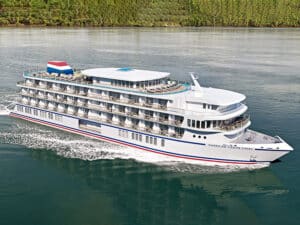
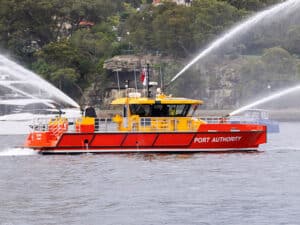
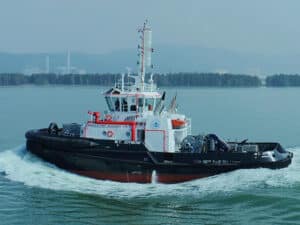
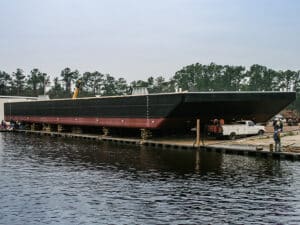
Leave a Reply
You must be logged in to post a comment.